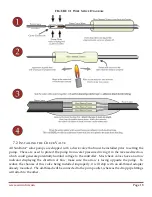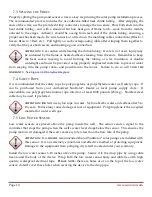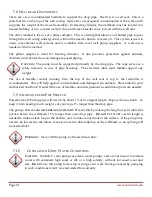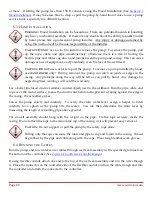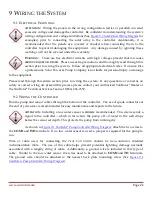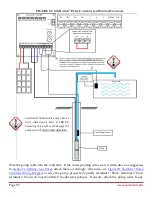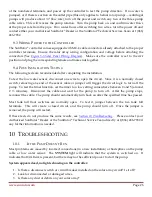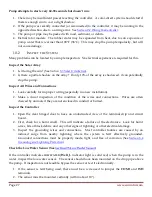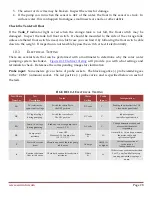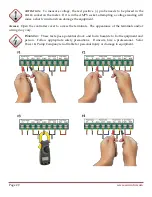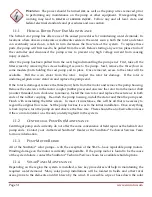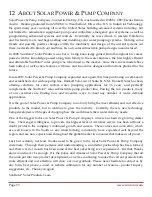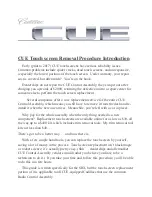
Page 27
www.sunrotor.com
Pump attempts to start every 60-90 seconds but doesn’t run:
1.
There may be insufficient power reaching the controller. A solar-direct system should start if
there is enough sun to cast a slight shadow.
2.
If the pump was recently connected (or reconnected) to the controller, it may be running in the
opposite direction due to a wiring error. See
Section 9.2 Wiring the Controller
.
3.
The pump or pipe may be packed with mud, sediment, or debris.
4.
Helical rotor models: The rubber stator may be expanded from heat, due to sun exposure or
pump water that is warmer than 100°F (38°C). This may stop the pump temporarily, but will
not cause damage.
10.2
I
NSPECT THE
S
YSTEM
Many problems can be located by a simple inspection. No electrical experience is required for this.
Inspect the Solar Array
1.
Is it facing the sun? (See
Section
5.3 Solar Orientation
).
2.
Is there a partial shadow on the array? If only 10% of the array is shadowed, it can potentially
stop the pump.
Inspect All Wires and Connections
1.
Look carefully for improper wiring (especially in a new installation).
2.
Make a visual inspection of the condition of the wires and connections. Wires are often
chewed by animals if they are not enclosed in conduit or buried.
Inspect the Controller
1.
Open the clear hinged door to have an unobstructed view of the terminal strip and circuit
board.
2.
First, check for a burnt smell. This will indicate a failure of the electronics. Look for burnt
wires, bits of black debris, and any other signs of lightning or other electrical damage.
3.
Inspect the grounding wires and connections. Most controller failures are caused by an
induced surge from nearby lightning where the system is
NOT
effectively grounded.
Grounded connections must be properly made, tight, and free of corrosion (See
Section 5.8
Grounding and Lightning Protection
).
Check the Low Water Sensor (See
Section 7.5 Low Water Sensor
)
If the controller indicates
LOW WATER
(
Well_L
indicator light is solid red) when the pump is in the
water, inspect the low-water sensor. The sensor should have been mounted on the drop pipe above
the pump. If inspection is not feasible, bypass the sensor or test it electronically.
1.
If the sensor is
NOT
being used, there must be a wire used to jumper the
COM1
and
WH
terminals.
2.
The sensor must be mounted vertically (within about 10°).
Summary of Contents for Solar Pump
Page 1: ...SunRotor Solar Pump Installation and Resource Manual...
Page 36: ......






